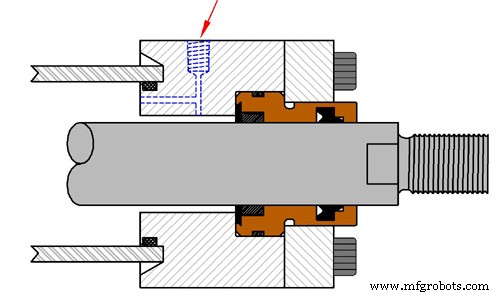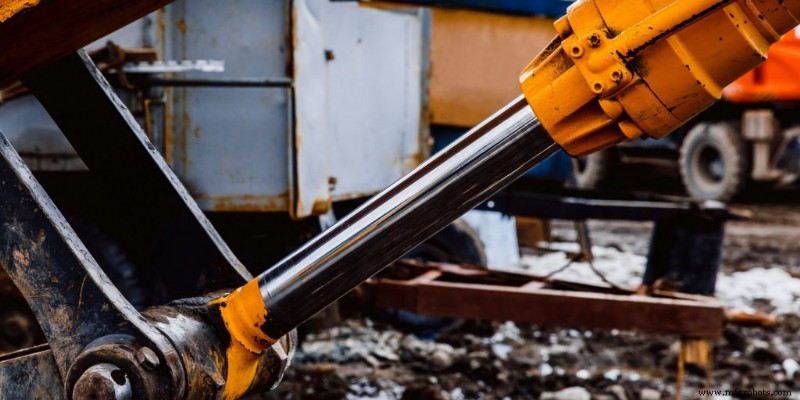Apakah Anda perlu mengeluarkan darah silinder hidrolik?
Banyak orang percaya bahwa mengeluarkan silinder hidrolik adalah pekerjaan yang hanya diperlukan ketika terjadi kesalahan dan pompa tidak mau hidup. Tetapi apakah ini benar-benar masalahnya? Dalam artikel ini, kita akan melihat mengapa Anda mungkin perlu mengeluarkan darah silinder hidrolik, dan apa saja prosedurnya.
Apa itu Silinder Hidraulik?
Silinder hidrolik digunakan dalam banyak aplikasi, termasuk pesawat terbang, mobil, dan mesin pertanian. Mereka terbuat dari serangkaian tabung yang saling berhubungan yang memberi tekanan pada cairan atau gas untuk menciptakan gerakan.
Silinder hidrolik biasanya digunakan untuk menyalakan perangkat, seperti pompa, kipas, dan motor. Mereka juga dapat digunakan untuk memindahkan benda atau cairan secara terkendali.
Silinder hidrolik tersedia dalam berbagai ukuran dan bentuk. Mereka sering terbuat dari logam atau plastik. Mereka dapat berupa unit silinder tunggal atau multi.
Apa itu Silinder Hidrolik Pendarahan?
Jika Anda mengalami masalah dengan silinder hidrolik Anda, penting untuk mengeluarkannya. Mengosongkan silinder Anda akan membantu membebaskan kotoran yang mungkin menghalangi piston dan katup, serta mengembalikan silinder ke kondisi kerjanya.

Jenis Silinder Hidrolik Pembuangan
Pembuangan silinder hidrolik adalah bagian penting dari pemeliharaan peralatan dan menjaganya agar tetap berjalan lancar. Ada beberapa jenis silinder hidrolik pembuangan, jadi penting untuk mengetahui mana yang perlu Anda buang.
Jenis yang paling umum dari silinder hidrolik berdarah adalah jenis jarum suntik. Silinder jenis ini memiliki pendorong yang pas di dalam fitting pada mesin. Plunger didorong ke atas dan ke bawah, dan ketika mencapai dasar, cairan dipaksa keluar melalui fitting dan ke tanah. This type of cylinder can be bled using a pressure bleeder or a vacuum bleeder.
The pressure bleeder uses air pressure to push the fluid out. To use this type of bleeder, you first need to raise the pressure in the machine by turning up the gas or oil valves. Then, connect the bleeder tube to the fitting on the machine and open the bleed valve. Next, pressurize the bleeder tube by pumping air into it until the gauge reads 100 psi (pounds per square inch). Finally, close the bleed valve and wait until the gauge reads 0 psi before releasing the air pressure.
The vacuum bleeder uses suction to push the fluid out. To
Why would you bleed hydraulic cylinders?
Most hydraulic systems use pressurized hydraulic fluid to operate the machinery. The hydraulic pressure is created when the liquid is forced through a valve and into a pipe. When the system needs to be repaired, it’s often necessary to bleed the hydraulic cylinders by draining off the pressure.
Bleeding the cylinders allows air and other contaminants to escape and prevents them from building up, potentially causing damage to the equipment or even a fire. It’s also important to bleed the cylinders regularly if you’re using synthetic oil or any other type of lubricant, as these will add volatility and pressure to the system.
Are there any risks to bleeding a hydraulic cylinder?
There are a few risks to bleeding hydraulic cylinders, but they are generally quite low. One potential risk is that the cylinder could rupture, resulting in severe injuries. Another risk is that the fluid could come out in a harmful or explosive manner. In either case, however, the likelihood of these risks occurring is very low.
How to Bleed a Hydraulic Cylinder
Bleeding hydraulic cylinders is an important step in maintaining hydraulic system performance. This procedure cleans and lubricates the components and helps prevent corrosion. To bleed a cylinder, you will need the following supplies:
-Cylinder
-Bleed screw
-Locknut
-Wrench
-Hose clamp
-Hydraulic fluid
-Container to store fluid (optional)
To bleed a cylinder, start by attaching the bleed screw to the cylinder head. Tighten the locknut until the bleeding is complete. If you are using a container to store fluid, attach the hose clamp to the container and connect it to the bleed screw. Turn on the hydraulic fluid and wait for the cylinder to fill with fluid. Once it has filled, turn off the hydraulic fluid and remove the bleed screw.
When to Bleed a Hydraulic Cylinder
If you are seeing hydraulic fluid leaking from your hydraulic cylinder, it is most likely time to bleed the system. Here are four reasons you may need to bleed a hydraulic cylinder:
-A bypass valve has been opened inadvertently, allowing fluid to escape from the cylinder and into the system.
-The cylinder seal has failed, allowing air and fluid to mix and create leaks.
-The piston has become stuck in the cylinder, preventing it from moving and creating a pressure build-up.
-The hydraulic system has been damaged in some way and needs to be repaired or replaced.

How to find the correct cylinder to bleed
There are a few things to keep in mind when bleeding hydraulic cylinders. The first is the type of cylinder you have. There are three types of hydraulic cylinders- internal, external, and mixed. Each has its own specificBleed procedure.
Internal cylinders can only be bled through the Schrader valve on the side of the cylinder. External cylinders have a bleed port on one end that can be used to bleed them, and they also have a Schrader valve on the other end. Mixed cylinders have both types of valves- one on each end.
The next thing to consider is the pressure rating of the cylinder. Most industrial applications require a pressure rating of at least 300 psi. If you’re not sure what your pressure rating is, check with your manufacturer or look it up online.
Now that you know some basics about bleeding hydraulic cylinders, it’s time to get started! Here’s a step-by-step guide to bleeding an internal cylinder:
1) Turn off the power to the machine and remove any stray objects that could get caught in the machinery.
2) Open the bleed port on the side of the cylinder (if applicable) and insert a suitable tube into
Kesimpulan
Bleeding hydraulic cylinders is a necessary task to keep your equipment in working order. However, it can be an extremely challenging and time-consuming process. In this article, we will discuss the different methods that are available for bleeding hydraulic cylinders and provide you with tips on how to successfully execute the task. We hope that this article will help make bleeding hydraulic cylinders a little bit easier for you.
Do you need to bleed hydraulic cylinders,please click topkitparts see more





